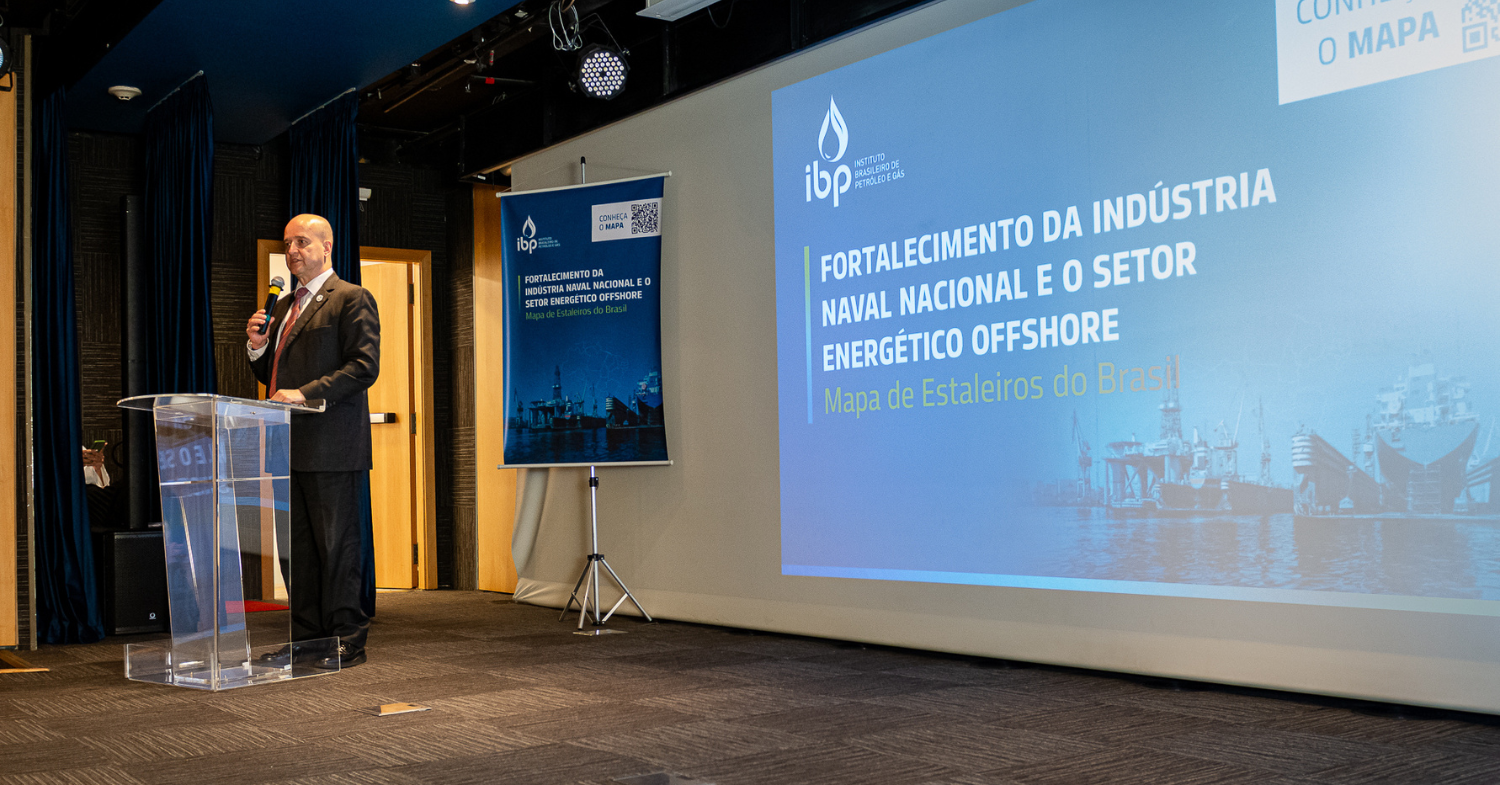The presidents of IBP and Petrobras reinforce synergy with the development of the shipbuilding industry and present the Brazilian Shipyards Map

At an event held this morning in Rio de Janeiro, the Brazilian Oil and Gas Institute (IBP) and Petrobras, with the support of Sinaval, launched the Brazilian Shipyards Map, part of an integrated initiative between the oil, gas, energy and naval sectors to bring comprehensive and up-to-date information on the country’s shipyard infrastructure and projects in a format readily accessible by the market. The Shipyards Map can be accessed here.
“Amid the pick-up in naval activity, collaboration between the oil and gas industry and the naval sector has been strengthened to promote transparency and boost the development of Brazilian infrastructure, and the map is one of these initiatives. It’s a collaborative tool and a joint effort between IBP, Petrobras and Sinaval, in an important cross-sector approach that provides a broad and up-to-date view of the sector”, Ardenghy points out.
Jean Paul Prates, president of Petrobras, stressed that the Shipyards Map is a first step in advancing the debate on topics such as local content and the Brazilian shipbuilding industry. In this context, Petrobras’ demand is a key pillar. The executive believes that the Map meets the need to present this infrastructure of national shipyards to the international market in synergy with Petrobras’ strong demand and the implementation of a government policy.
“The shipbuilding industry is relevant on a global scale, it’s not old-fashioned. Norway and Spain have had significant cycles in the shipbuilding industry, as have the Japanese and Koreans, who have invested heavily in shipyards. Brazil is regaining its position on the path to growth in the shipbuilding sector,” explains Jean Paul Prates.
Pedro Alem, Executive Manager for Land Areas, Shallow Waters and Industrial Policy at IBP, presented the tool with its objectives and purposes. He pointed out that the map is a living, interactive tool in constant updating. Alem mentioned that its intuitive dashboard allows the search to be filtered by shipyards that produce FPSOs or display their data, such as geographical position, steel handling capacity and size. “This tool will allow shipowners, oil companies and investors to get to know the entire shipyard infrastructure in Brazil,” he stressed.
Investments in the sector
Jean Paul Prates added that Petrobras’ strategic plan includes R$500 billion and the creation of 280,000 jobs a year by 2028. It includes the construction of offshore platforms with modules up to three times larger than the current ones, such as the P-80 and P-83. Prates points out that there are seven FPSOs in the study phase and three shipyards that are already in high demand at the moment.
The company’s asset revitalization plan will focus on 23 platforms and another 40 to be dismantled. An order for 200 support vessels is expected to be placed to increase the fleet from 2028. Up to 38 more modern maritime support vessels are to be built, with hybrid propulsion and reduced emissions.
Prates also announced a business roundtable at the OTC, in partnership with IBP, for Brazilian suppliers to access the global market, as well as to enable dialogue with investors and organize technical visits to Brazil so they can get to know the national shipyard infrastructure.
The event, sponsored by Triunfo Logística, was also attended by representatives of the Merchant Marine Fund (FMM), Abimaq, ANP, Abemi, BNDES, Abespetro, Congressman Alexandre Lindenmeyer and Congresswoman Celia Jordão.